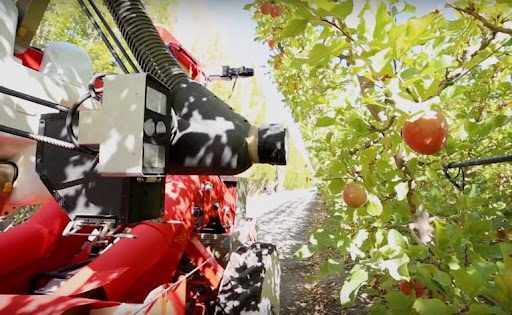Robots appeal to a variety of businesses in the modern industrial environment because they relieve labour problems, particularly an ageing workforce and the ability to boost output efficiency. In the agriculture sector, nothing has changed. The use of robots in fieldwork would assist ease the labour shortages that are now occurring in both the United States and Europe. Robots and other technologies would also assist lessen the limits imposed by new chemical and natural resource agricultural regulations and the growing requirement for precise operations. The delicate nature of the operation, however, makes the use of conventional industrial robots challenging.
In order to cope with natural diversity in food goods or the outdoor environment, the robots that will be utilised in food and agricultural applications would need to be far more flexible than what we’ve seen in automobile production facilities.”
While there are many areas that businesses and startups may invest in, the three most important ones are environmental management, harvesting, and sowing and weeding. Each category includes important agricultural fields that might gain from the introduction of robotic equipment and technological advancements.
Weeding, Planting, and Seeding
Farmers benefit from spraying and weeding robots in two ways. By removing a tedious chore from their list of routine tasks, they first lower the amount of labour required. By precisely targeting crops, they lower the quantity of pesticides that must be sprayed. Farmers produce healthier, safer crops while saving money on product costs.
By employing computer vision targeting, Blue River asserts that their “see and spray” robots may minimise the consumption of agrochemicals by 90%.
Robotic spraying technology has been developed by a variety of tech firms. John Deere has purchased Blue River Technology, an agricultural robotics start-up known for its spraying and weeding robots. According to Blue River, its robots can cut agrochemical consumption by 90%. Its tractors can concurrently cover 8 to 12 rows of crops at a pace of 6 to 8 mph. The tractor’s cutting-edge vision technologies allow it to directly target the crops as it passes over them.

Autonomous robots from Naio Technologies can independently move between rows of fruits and vegetables and recognise various weed species using laser and video guidance.
French robotics startup Naio Technologies utilises laser and video guidance to autonomously move through rows of fruits and vegetables. It can distinguish between several plant species to find weeds. Oz, their robot, has four electric engines and can operate independently for three hours before needing to be recharged. When in autonomous mode, it picks and follows the show’s plant rows without human guidance.

The soil and seeds are packaged into planting trays by this PlantTape plant transplanting robot, which are then cut and planted by automated robots.
Companies like PlantTape from Spain have created a plant-transplanting robot for spreading automated seeding that offers a completely integrated system of tape sowing, fertilization, and nurseries care. Compared to traditional transplanting techniques, this gives a better efficiency. The procedure entails making tape trays to store the dirt and seedlings. Up to 900 plants may fit on each tray. The robot tractor retrieves the tape from the tray, cuts it to fit each plant, and then carefully plants the plant in the dirt. On lettuce, broccoli, cauliflower, celery, onions, and tomatoes, PlantTape can be applied.

Crop harvesting automation is nothing new. However, the technology of automation has not yet benefited speciality crops like nuts, fruits, and vegetables. The crops’ wide range in size, height, and colour contributes to the issue. Additionally, because they need less effort to pick up, they are more sensitive. Additionally, crops need to be promptly evaluated for size and quality by automation systems before being packaged.



































